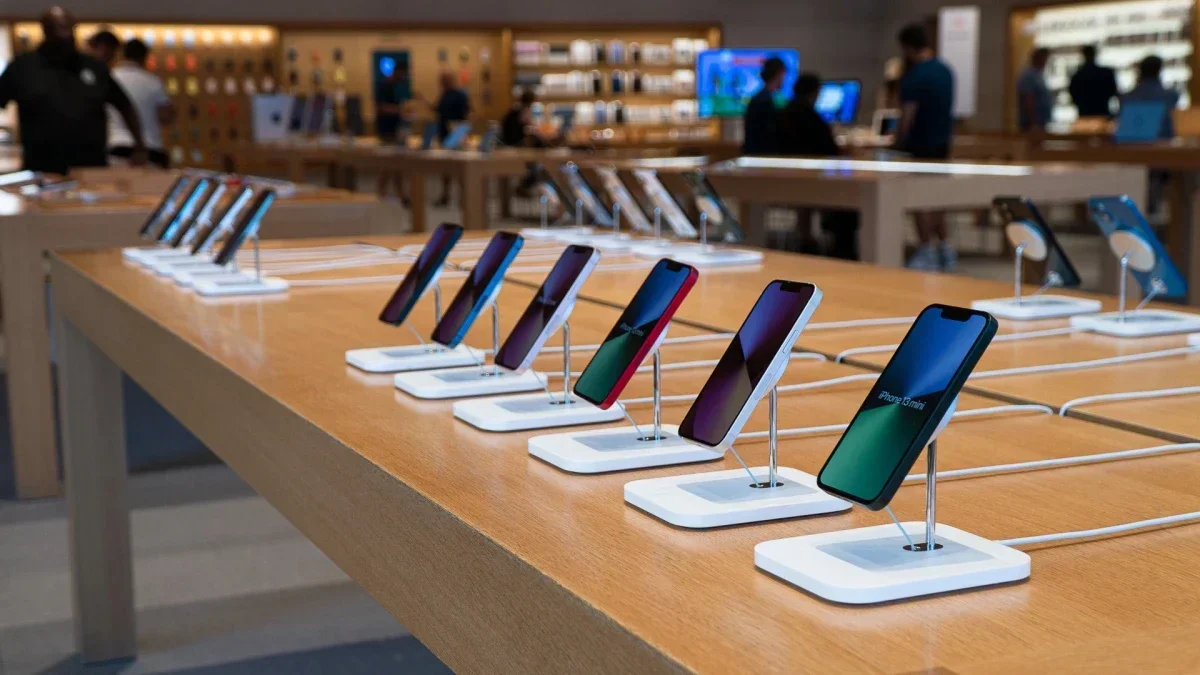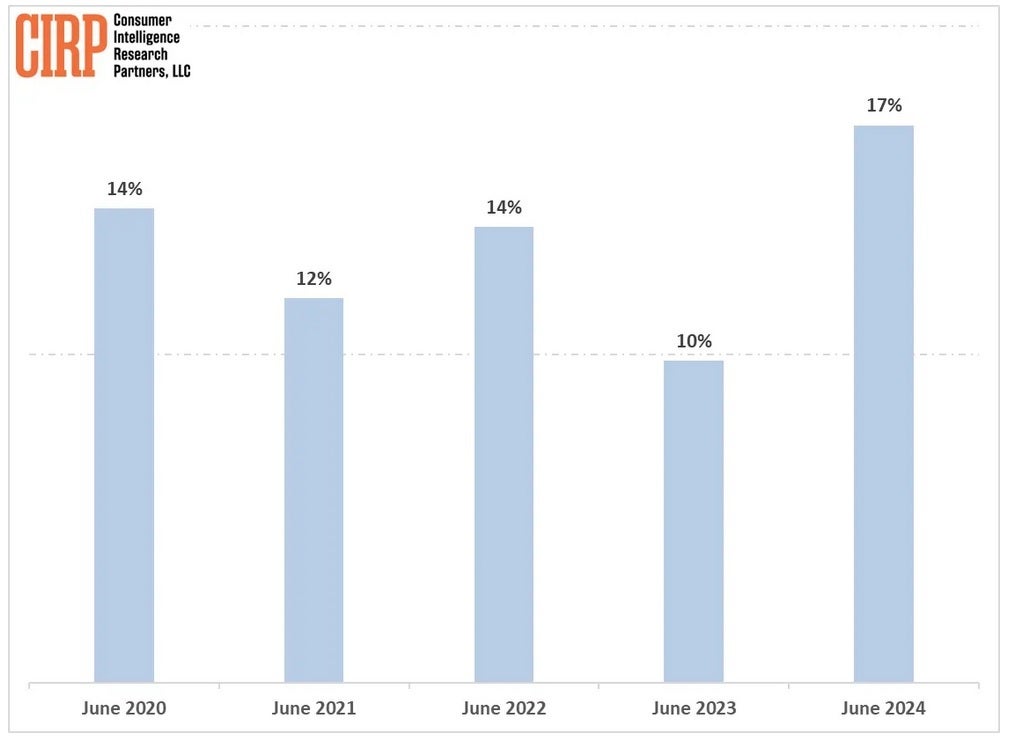Increase in Android switchers last quarter could explain weak iPhone 15 series sales

According to Consumer Intelligence Research Partners (CIRP), in June 2024 17% of iPhone buyers previously owned an Android phone. This represents the highest percentage in five years and is also a huge increase from the 10% of Android users who switched to an iPhone in June of last year. CIRP believes that the increase in the number of Android switchers is not a positive for iPhone and could indicate why the iPhone 15 series is underperforming compared with past models.
According to CIRP, the higher percentage of Android switchers moving to an iPhone means that the number of iPhone users upgrading to the latest model has declined. This is a core group that Apple counts on to upgrade to a new iPhone every few years and if this group isn't upgrading as much as it has in the past, that's a bearish sign for Apple. It also reveals why older models like the iPhone 14, iPhone 13, and iPhone SE are outperforming the iPhone 15 line.
Why an increase in Android switchers is not necessarily a positive for Apple
Android users don't mind saving money and purchasing older models when they switch to an iPhone, especially if they want to test out how using an iPhone feels to them. Not only are some Android users familiar with low-to-mid-range models, but some of the features in older iPhone models could still feel new and iOS might also feel fresh to many switching from an Android phone to the iPhone. As a result, an increase in Android switchers isn't automatically positive for Apple if it results in more purchases of older, cheaper models.

The percentage of iPhone buyers coming over from Android in June quarters. | Image credit-CIRP
After purchasing the original iPhone in 2007, buying the LG Voyager feature phone and the disaster known as the BlackBerry Storm in 2008, I bought the Motorola DROID in 2009. I remained an Android user until 2020 when I switched from the Pixel 2 XL to the iPhone 11 Pro Max.
Switching from Android to iOS was really not a big deal, but I did have the advantage of writing about smartphones every day. In 2021 I bought the Pixel 6 Pro and once again, switching platforms wasn't such a big deal. But after a brief honeymoon period, Google's decision to sell a flagship with a crappy application processor, lousy modem, laggy optical fingerprint scanner, and quick-to-die battery sent me back to the iPhone 15 Pro Max. I still use my Pixel 6 Pro, running the Android 15 beta on Wi-Fi, to help with Android stories.
The grass is always greener on the other side
I've noticed myself playing around with the Pixel 6 Pro a little more. I suffer from something I called "The grass is always greener on the other side-itis" in an article last year and I'm sure many of you suffer from this too. If I do switch back to a Pixel, I plan on waiting until the Pixel 10 since this model will feature the Tensor G5 application processor, the first SoC fully customized by Google, and the chip will be manufactured by TSMC using its 3nm process node.
If you're considering upgrading to the Pixel 9, you might want to hold off until next year's Pixel 10. If you're thinking about leaving Android for iOS and would prefer to test an older, cheaper model first before going all-in on the iPhone, your best bet might be to wait for next year's expected spring release of the iPhone SE 4. The device is expected to borrow some design features from the iPhone 16, including Face ID and the Dynamic Island, and carry an A18 chipset under the hood. A 48MP single rear camera could be included.
The iPhone SE 4 could be priced in a range of $499-$549 making it a worthwhile device for Android users looking to dip their toes in the water before they decide whether to fully submerge themselves in iOS and put up the additional funds required to buy an iPhone Pro model.
Follow us on Google News














Things that are NOT allowed:
To help keep our community safe and free from spam, we apply temporary limits to newly created accounts: